Alien life and where to find it Understand article
As space missions venture to the moons of Jupiter and Saturn – and beyond – to look for the conditions for life, what alien life forms might be found in such exotic environments?
We are entering a new era in space exploration: one that might finally reveal whether or not we’re alone in the Universe. Half a century after first landing on Earth’s moon, in the next decade we will explore further the moons that orbit other planets in our Solar System. Several NASA and ESAw1 missions are planned that will take a close look at some of those moons (see text box), and – while no life outside Earth has yet been detected – they will search for the conditions that might allow life to emerge. What are these missions likely to find, and where in the Solar System are the best places to look for life?
Moons and the search for life
In general, the other planets orbiting our Sun are hostile to life. They are either too hot, like Venus and Mercury, or too cold, like Neptune. Some, like Mars, lack a dense atmosphere, while others are essentially nothing more than atmosphere, such as the gas giants Jupiter and Saturn. Most notably, the other planets in our Solar System seem to lack liquid water, a necessary ingredient for life as we know it.
However, the moons – once thought to be cold, sterile rocks and therefore quite boring, from an astrobiologist’s point of view – are turning out to be far more promising in the search for conditions that may support life. Several have water, often under a thick layer of ice that protects it from evaporation and radiation. In the case of Ganymede, the largest moon of Jupiter, its liquid ocean may be 200 km deep, under maybe 50 km of ice.
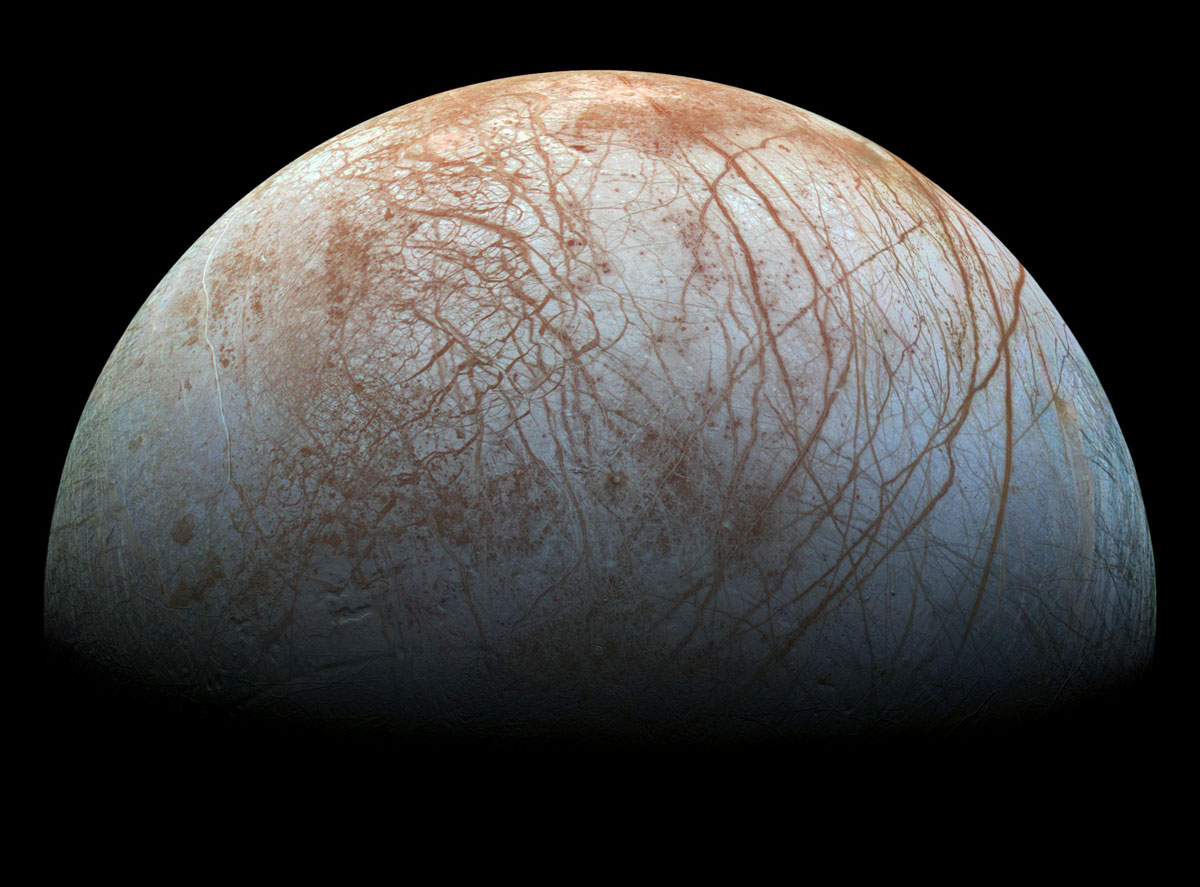
NASA/JPL-Caltech/SETI Institute
Recently discovered plumes of water erupting from the surface of some of these moons suggests their interiors are warm and contain liquid, perhaps salty water – not unlike Earth’s oceans. Too far from the Sun to be warmed by it, these moons may instead be heated by radioactive decay in their cores or by tidal heating generated by the gravitational attraction of their planets. At the bottom of their oceans, scientists suspect, there may be hydrothermal vents that release heat and minerals into the water, creating conditions ripe for life to emerge. Indeed, many scientists think life on Earth may have originated in deep-sea hydrothermal vents that even today teem with life, using energy derived from the planet’s interior rather than the Sun.
Pluto’s hidden ocean
Evidence is growing that another body in our Solar System has an ocean hidden beneath its icy surface: the dwarf planet Pluto. In 2015, NASA’s New Horizonsw2 flyby mission revealed that Pluto is more geologically complex and active than we had thought, with nitrogen-ice glaciers, water-ice mountains, and an unevenly thick ice sheet. These observations, along with gravity data, suggest there may be liquid water under the surface – which is surprising, because Pluto is so far from the Sun that water should be frozen solid.
In 2019, a joint study by scientists from several Japanese universities and the University of California, Santa Cruz, suggested that an insulating layer of gas beneath Pluto’s icy surface could be keeping a deeper layer of water in its liquid state. If true, it might mean that other distant celestial objects could have liquid water, too, and that there may be many more oceans in the Universe than previously thought, making the existence of extraterrestrial life even more plausible. “If you have liquid water that’s been sitting there for 4 billion years, maybe it’s cooked up something”, says Seth Shostak, senior astronomer at the SETI Institute in California, USA. “And if Pluto can cook up something, there could be plenty of other places.”
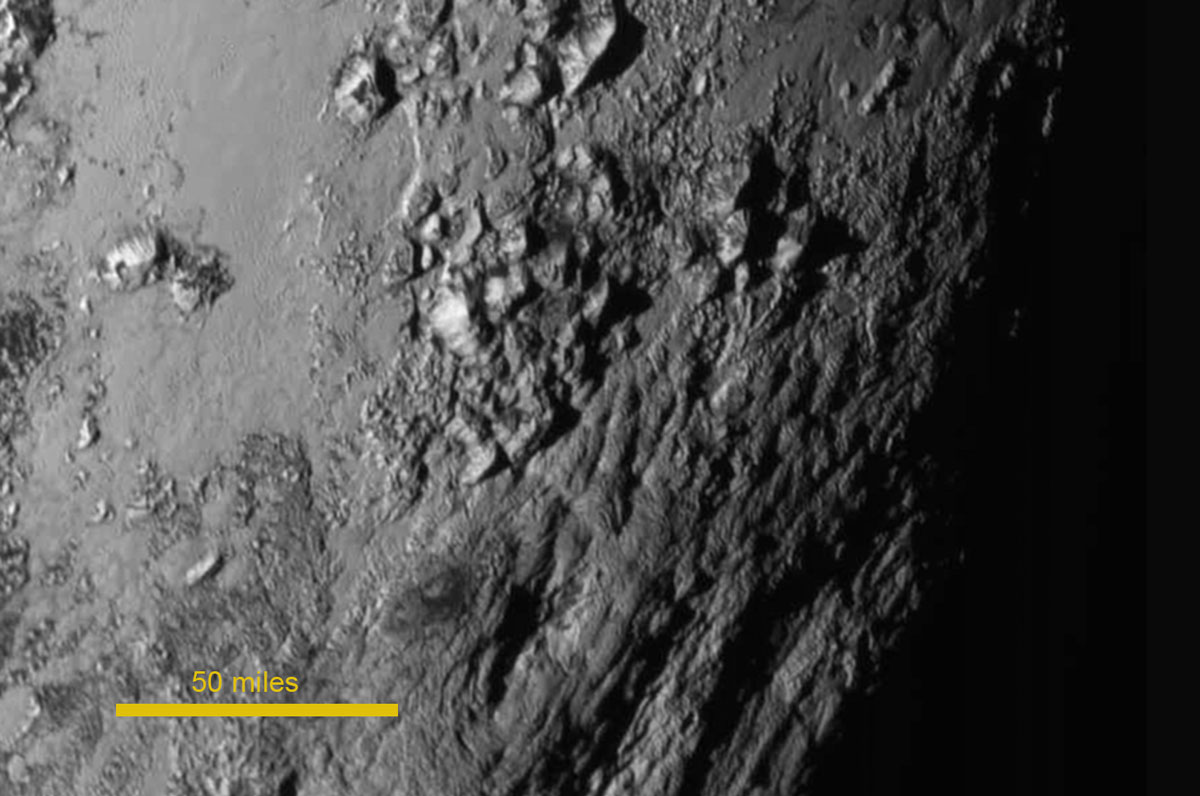
Laboratory/Southwest Research Institute
Beyond the Solar System
Pluto, Earth and the moons of our Solar System are not the only places with oceans. Liquid water, once considered a limited commodity that made our planet special, is now thought to be fairly common on exoplanets – planets in other solar systems. “H2O is all over the place”, says Shostak, adding that there is “very little reason to think Earth is exceptional” in this regard.
Studies of exoplanets suggest that some may be ‘water worlds’ – true blue marbles that surpass even our own blue planet’s water content. According to models, there may be exoplanets that comprise more than 50% of water by mass, compared with a mere 0.02% for Earth. Some exoplanets are thought to be covered entirely in water, with ocean the only habitat available – so any life there would be marine.
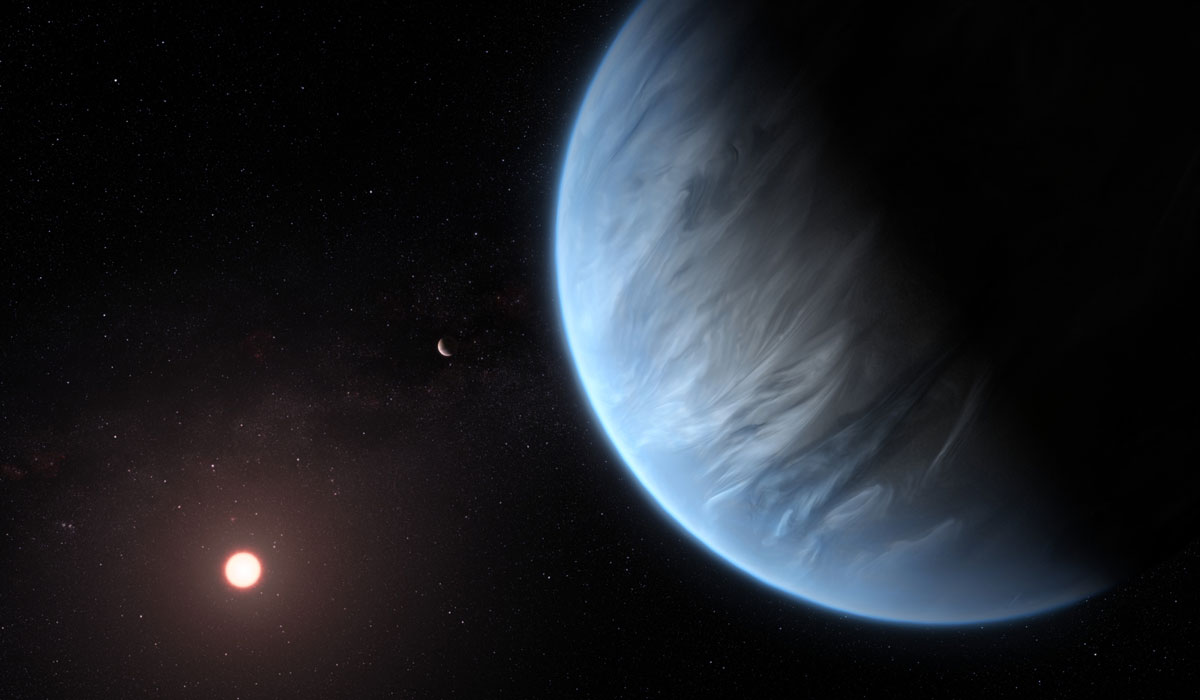
ESA/Hubble, M. Kornmesser, CC BY 4.0
Even exoplanets that are not true water worlds, in the sense of being completely enveloped in a global ocean, may still be rich in water. For example, several of the exoplanets discovered in the TRAPPIST-1 planetary system, 39 light years away, seem to be rocky worlds with up to 5% of their mass being water. Some of these planets orbit their star in the habitable zone, where the temperatures are right for liquid water to exist, potentially supporting life – although surface conditions may be very inhospitable in other ways.
Replaying the tape of life
If there is life in any of the alien oceans in our Solar System or beyond, what might it look like? Would evolution replay the tape of life and produce organisms similar to what we see on Earth, or would everything be completely different?
One problem might be that alien life forms are so exotic that we won’t identify them as living. “For most of the stuff that is likely to exist, it will be difficult to prove that it is life; I’m not even sure we’d be able to tell”, says Casey Brinkman, an astronomer at the University of Hawaii in Manoa, USA. “How do you define life? There’s not a really good singular definition”, she says. As well as the problem of defining life in a way that satisfies scientists from different disciplines, Brinkman points out that, even on Earth, there are many possibilities for diverse life forms that don’t look much like recognisable creatures – from plant-like marine organisms to static structures such as coral reefs.
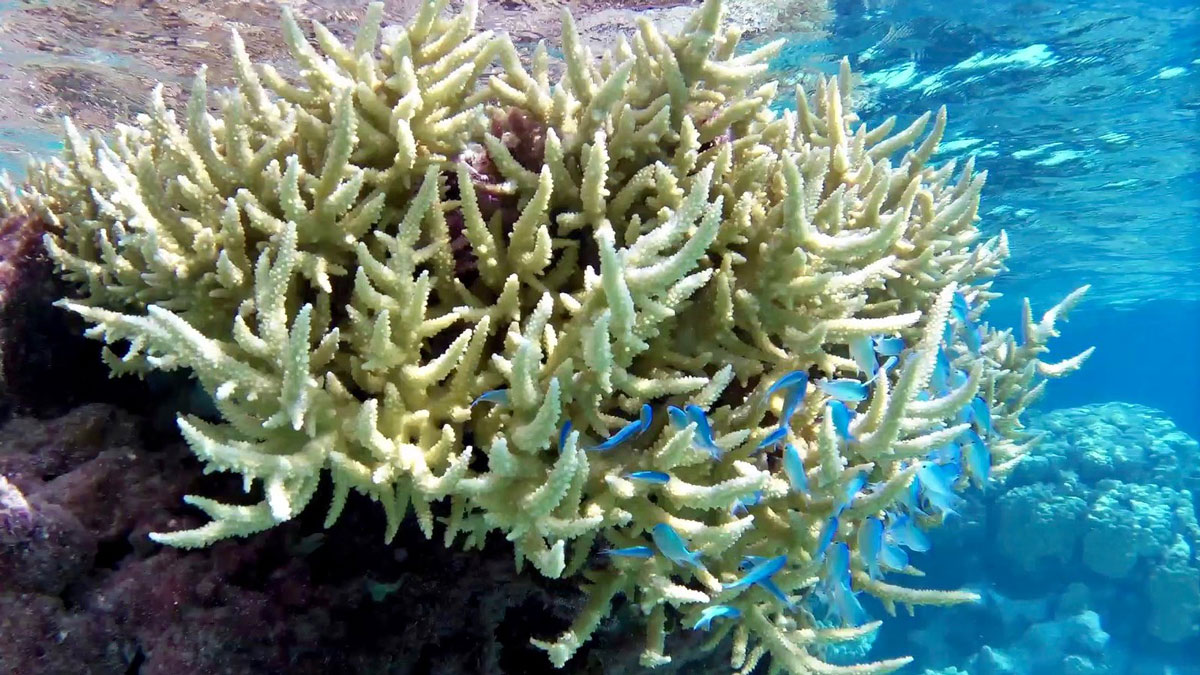
Adam Reeder/Flickr, CC BY-NC.2.0
But some scientists argue that the same physical and geological constraints found on different planets are likely, due to the laws of physics and chemistry, to cause different life forms and lineages to converge on the same solutions, resulting in organisms evolving to look and behave in similar ways. In water, for example, the need to swim and reduce drag has resulted on Earth in the similar streamlined body form of animals as diverse as fish and dolphins.
“Evolution repeats itself sometimes, but often it does not”, writes evolutionary biologist Jonathan Losos in his 2018 book Improbable Destinies: Fate, Chance, and the Future of Evolution (Losos 2018). “Despite the occurrence of some cases of convergence, I would expect extraterrestrial life to be for the most part very different from what we see here on Earth”, he says. “An extraterrestrial might even be a mash-up, platypus-style, of many different parts borrowed from different Earth inhabitants.” Famously, the duck-billed platypus of Australia has a bill like a duck’s, a tail like a beaver’s, the webbed feet of an otter, watertight fur like a sea otter, electroreception like an eel, and a venomous spine on its ankle like a rattlesnake fang.
We might expect to find this kind of evolutionary mash-up on the most Earth-like exoplanets and moons, but things could get even weirder in places with a more exotic chemistry – such as Saturn’s moon Titan, where seas are made of liquid methane rather than water. The Cassini-Huygens mission landed a probe on Titan in 2005, which revealed an Earth-like landscape in very non-Earth-like conditions: a world so cold that water, mixed with rock, forms hills and solid ground, and the clouds, rain, rivers and seas are made of methane and ethane, which are gases on Earth. In such alien environments, the need for life forms to adapt to local conditions means they may be quite unlike anything on Earth.
Imagining what life forms might exist beyond Earth takes us far into the realm of speculation, but that hasn’t stopped such luminaries as biotechnologist Craig Venter and physicists Michio Kaku and Stephen Hawking from dreaming up possibilities. And given the endlessly creative forms that evolution has spawned on our own planet, it seems reasonable to imagine there must be far stranger things awaiting discovery elsewhere.
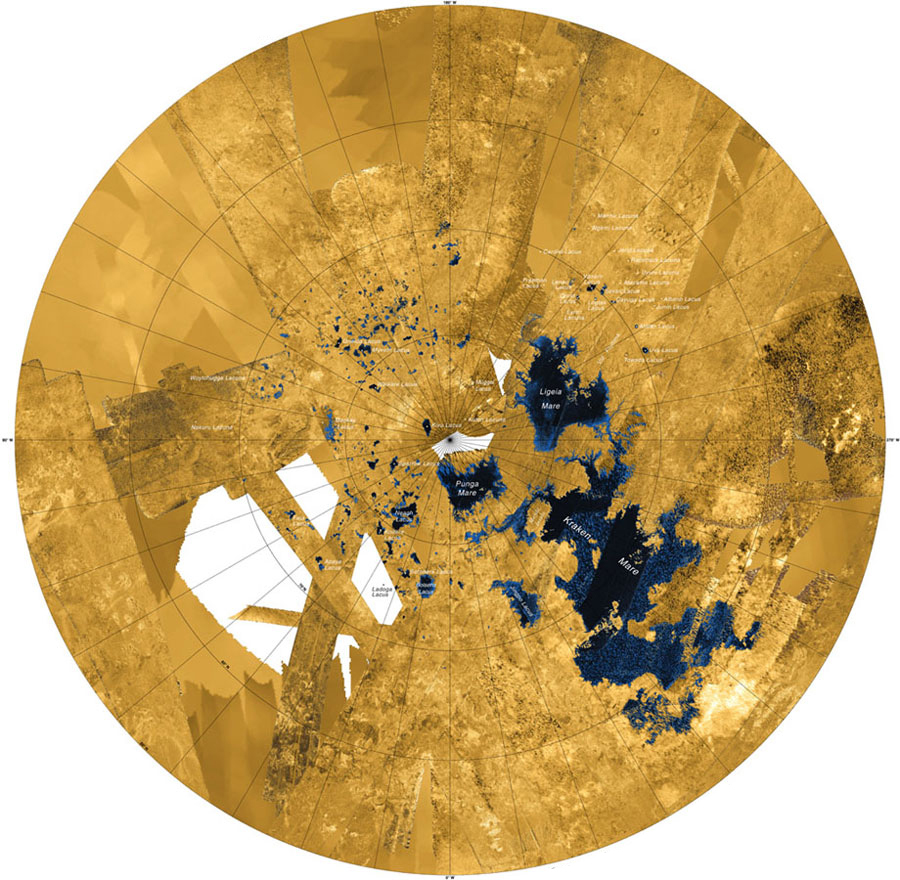
NASA/JPL-Caltech/ASI/USGS
More missions to moons
Several space missions to moons in our Solar System are planned in the coming decade. One of their aims is to look for evidence of extraterrestrial life.
- ESA’s JUICE mission, planned for launch in 2022, will study Jupiter’s three icy moons, Callisto, Europa and Ganymede. Among other objectives, it will study the moons’ subsurface oceans and habitability and investigate the chemistry essential for life.
- NASA’s Europa Clipper mission, with a take-off date of 2023, is planning to orbit Jupiter and fly past its moon Europa multiple times to investigate whether the icy moon could harbour conditions suitable for life.
- NASA’s Dragonfly mission to Saturn’s moon Titan is set to launch in 2026 and arrive on Titan in 2034. As well as landing a drone-like craft to explore promising locations and look for signs of life, it may also use an autonomous submarine to study one of Titan’s largest seas, Kraken Mare. The mission may also include a nuclear-powered ‘tunnelbot’ to drill through ice and reach the oceans below – and to check the underside of the ice for microbial biofilms.
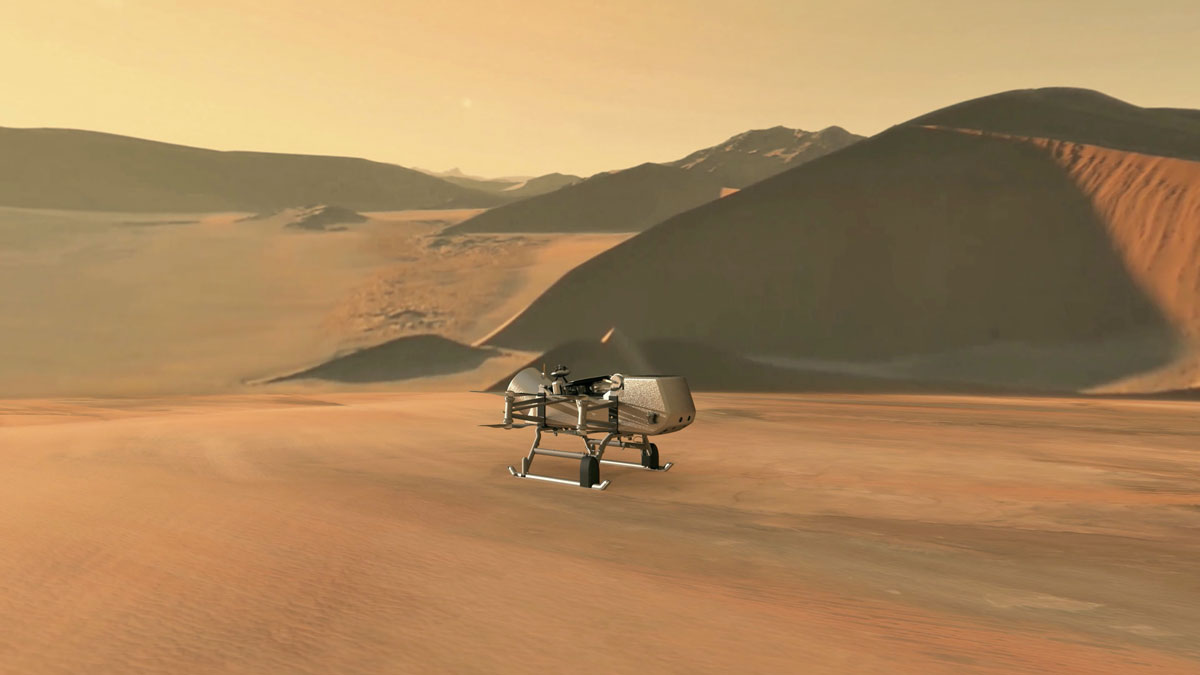
NASA/JHU-APL
References
- Losos J (2018) Improbable Destinies: Fate, Chance, and the Future of Evolution. Riverhead Books. ISBN: 9780525534136
Web References
- w1 – ESA (European Space Agency) is Europe’s gateway to space, with its headquarters in Paris, France.
- w2 – NASA’s New Horizons mission ran from 2006 to 2014.
Resources
- Read about the ocean thought to be under Pluto’s surface.
- Find out more about ‘water-world’ planets on the Universe Today website.
- Find information about the Cassini-Huygens mission on the ESA and NASA websites. See:
- Read a news article about the proposed ‘tunnelbot’ for NASA’s Dragonfly mission to Titan.
- Explore how life could have begun on Earth. See:
- Extance A (2020) Finding the recipe for life on Earth. Science in School 49: 13-17.
Review
The search for signs of life beyond Earth, or the right conditions for it, has just begun. We are looking within our Solar System (e.g. Mars missions, or even at comets) and on distant exoplanets. This article speculates about what alien life forms – if they exist – might be found in exotic places in space.
The article could be used as a comprehension exercise, and questions could include:
- Which environmental conditions may be necessary for life outside Earth?
- Why might it be difficult to identify alien life forms as living?
- How would you define life?
- Discuss the possibilities for life on Pluto, the dwarf planet.
- Some space missions to moons are planned to start within the next decade. What are these missions, and what are their aims?
Gerd Vogt, physics and technology teacher, Higher Secondary School for Environment and Economics, Yspertal, Austria





